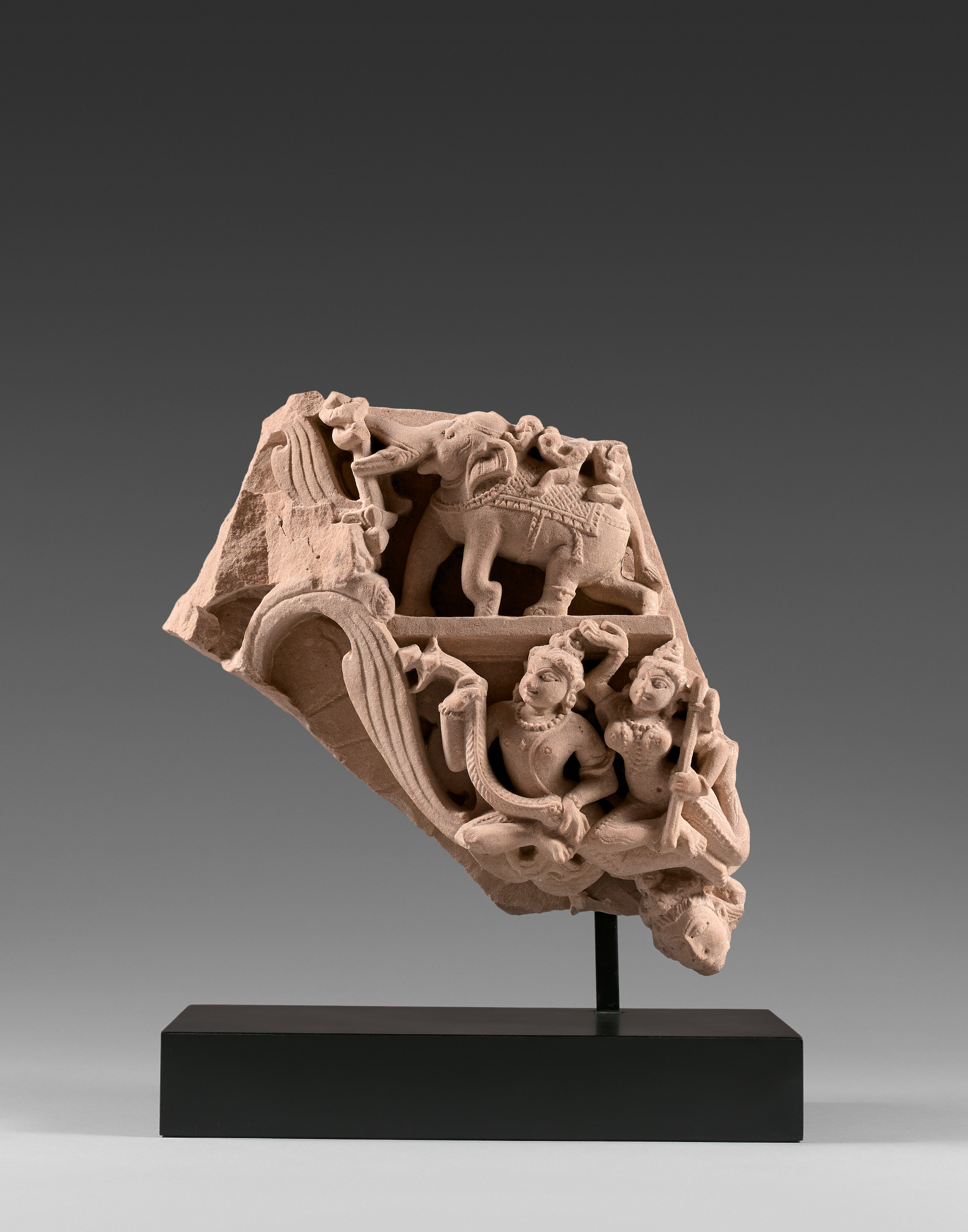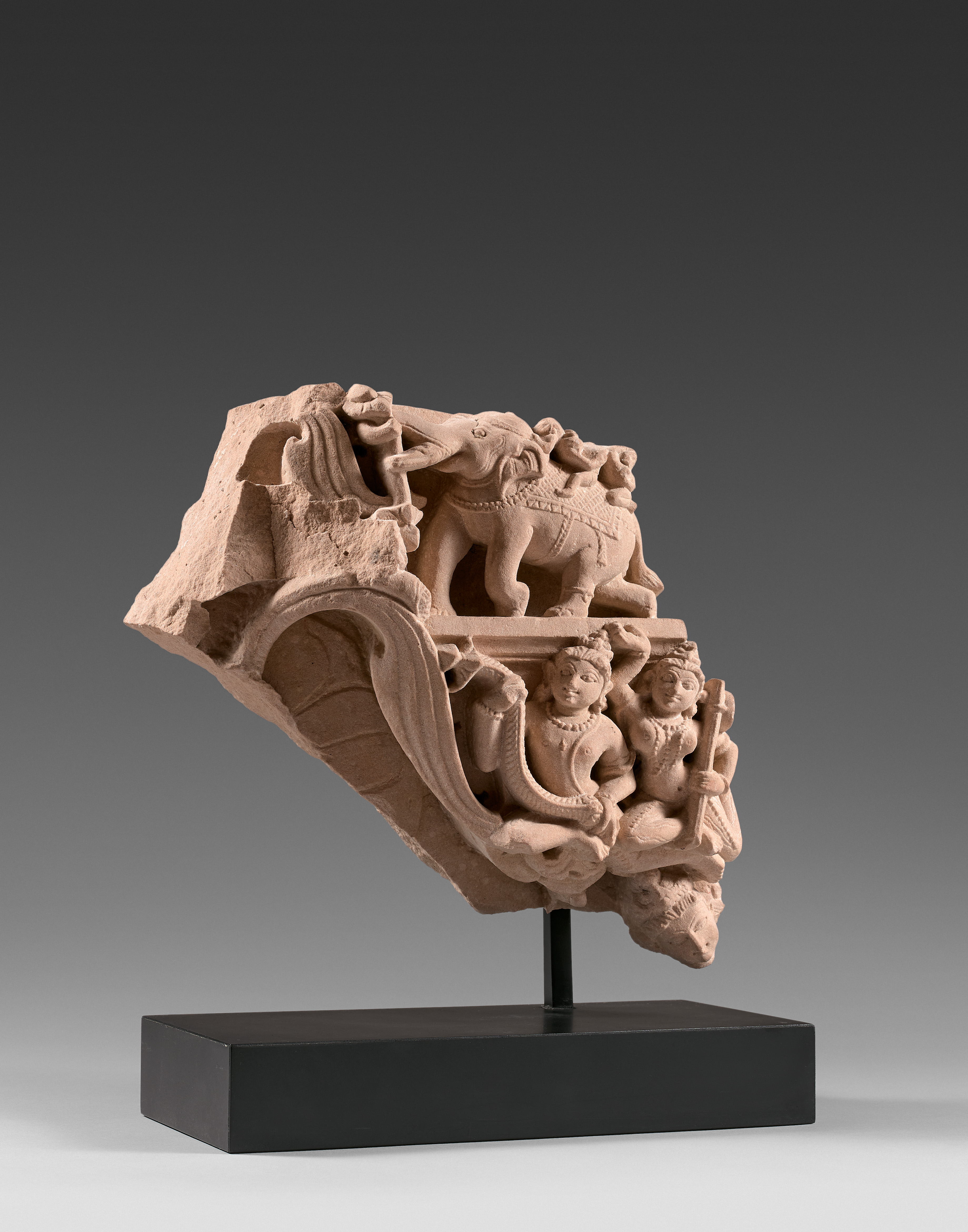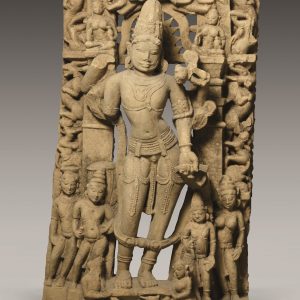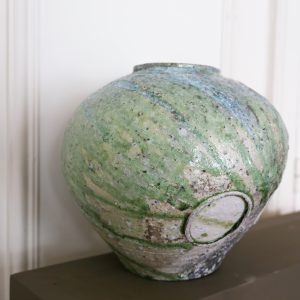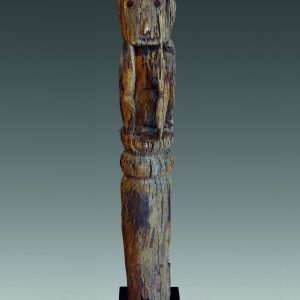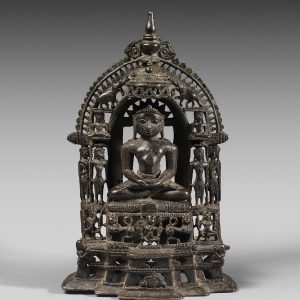Fragment of a Jain stele
Buff sandstone
Central India
9th-10th century
H. 23 cm or 9 in
Description
This charming relief with an elephant and a flying couple presents such a great quality of details and proportions that we date it to the 8th-9th centuries. Measuring 23 cm high and 22 cm long (9 x 8 ⅝ in), this fragment made of beige sandstone adorned the top of an Indian stele that must be understood in a Jain context, in the regions of Madhya Pradesh or Rājasthān.
An elephant on a small platform with moulding holds an indistinct element in its trunk. It can be assumed that it refers to the abhiṣeka of Śrī, a devotional activity consisting in bringing blessing through the pouring of sacred water. This is a particularly auspicious theme, common to Hinduism, Buddhism and Jainism. The elephant also suggests royal and sacred status, and thus pays homage to the Jina in the niche below, where part of the halo can still be seen. In the register below, a flying couple reinforces the positive character of the scene. On the left, the man is a vidyādhara, a being with magical powers living in a wonderful world and celebrating the deities with bearing jewels or garlands. He holds a lotus flower here. His partner sketches with the right hand a gesture of approval and holds a vīṇā, an Indian musical instrument. She could therefore be a gāndharvī, a celestial musician being. The very pretty head appearing in the lower corner was probably that of a fly-whisk bearer, accompanying the central Jina.
This piece is extremely fine. Carved in high relief, an openwork has been created between and behind the animal’s legs. The depth is manifest between the limbs of the flying deities, catching the light and increasing the volumes. Every detail is signified with remarkable precision. The features of the faces with the pointed nose and chin, the almond-shaped eyes accentuated by strongly incised eyebrows, the jewellery reminiscent of real jewels and following the curve of the bodies: each element is meticulous, subtle and well-balanced. Both dense and lively, but also very readable, this relief is beautifully rendered and could come from the Gurjara-Pratihāra Empire in northern India.
Provenance : Private collection, UK, acquired from Kapoor Galleries Inc. New York in 2008.

